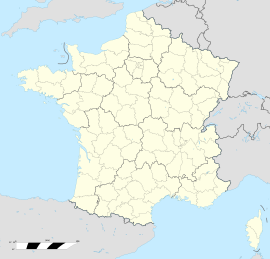Hangard
| Hangard | |
|---|---|
| Commune | |
| Coordinates: 49°49′25″N 2°30′47″E / 49.8236°N 2.5131°ECoordinates: 49°49′25″N 2°30′47″E / 49.8236°N 2.5131°E | |
| Country | France |
| Region | Hauts-de-France |
| Department | Somme |
| Arrondissement | Montdidier |
| Canton | Moreuil |
| Intercommunality | Avre Luce Moreuil |
| Government | |
| • Mayor (2001–2008) | Dominique Paille |
| Area1 | 6.34 km2 (2.45 sq mi) |
| Population (2006)2 | 117 |
| • Density | 18/km2 (48/sq mi) |
| Time zone | CET (UTC+1) |
| • Summer (DST) | CEST (UTC+2) |
| INSEE/Postal code | 80414 /80110 |
| Elevation | 35–102 m (115–335 ft) (avg. 50 m or 160 ft) |
|
1 French Land Register data, which excludes lakes, ponds, glaciers > 1 km² (0.386 sq mi or 247 acres) and river estuaries. 2Population without double counting: residents of multiple communes (e.g., students and military personnel) only counted once. |
|
1 French Land Register data, which excludes lakes, ponds, glaciers > 1 km² (0.386 sq mi or 247 acres) and river estuaries.
Hangard is a commune in the Somme department in Hauts-de-France in northern France. The commune is centered on Hangard village, located at longitude 2.5131E and latitude 49.8236N.
saint-Martin Hangard
Hangard Shield
Hangard
Map of the commune
Hangard is situated on the D76 road, some 13 miles (21 km) southeast of Abbeville, and is at an elevation of about 35m.
Census records show that at the French Revolution the village had 244 inhabitants, but by 1846 this had risen to 345 after which the population began to decline until it was 172 just prior to the First World War. The village was destroyed in the second battle of Villers-Bretonneux, and thereafter has maintained a population of about 100.
The name comes from a personal name "Hano" and the Germanic "Gardo" and means ‘Hano’s garden’.
In 1135 the name was spelt ‘Hangardum’.
Stone-age tools of flint, in the shape of blades, arrows and axes have been found in the area. The excavations made in 1890 revealed weapons of worked stones were found near the village, including carved polished flint stones, each shaped knife, scraper and other axe-shaped.
A dolmen once stood nearby but has now disappeared into the marshy land.
During World War I, on 28 March 1918, the village was evacuated. By April 1918 the village had been totally destroyed.
In the 12th century, the Lord of Hangard was Foulques Lehardi, a valiant knight, known for his strength and his bravery in many battles, in the crusades. He was however, wounded, captured and ransomed during the crusade. In 1362, the village is mentioned in a census as the stronghold of Madam Jehanne of Rivery. A number of other lords of the village are known, including:
...
Wikipedia


